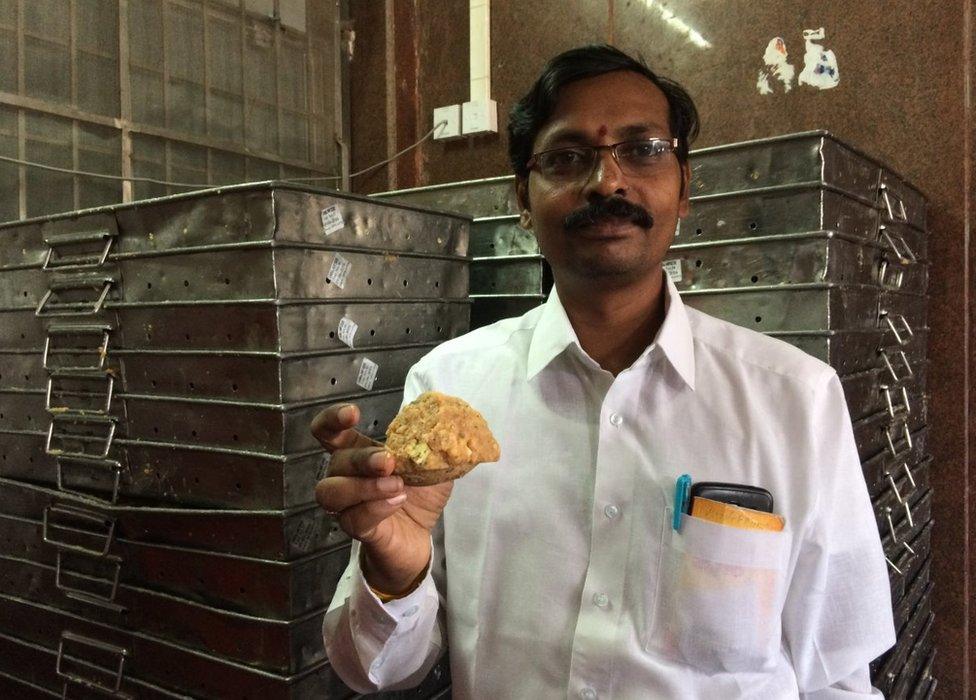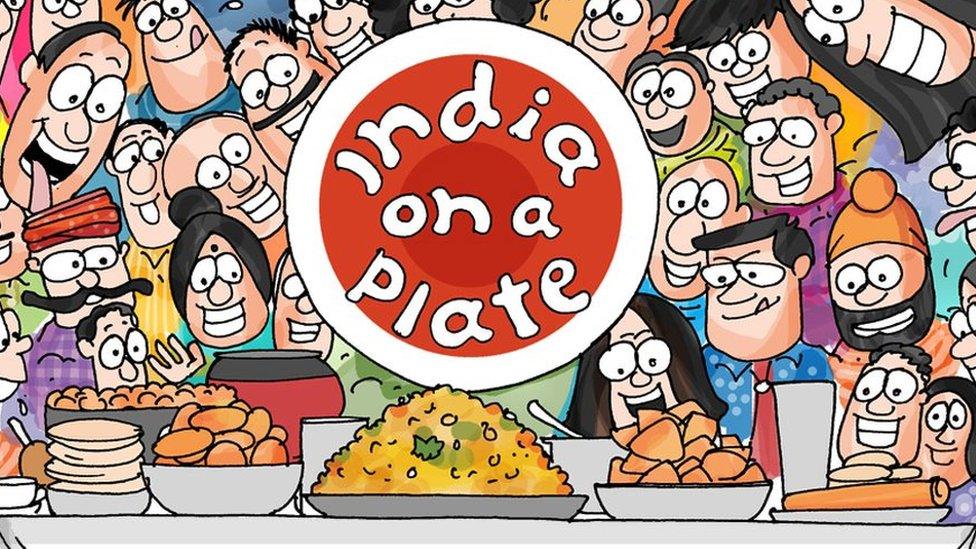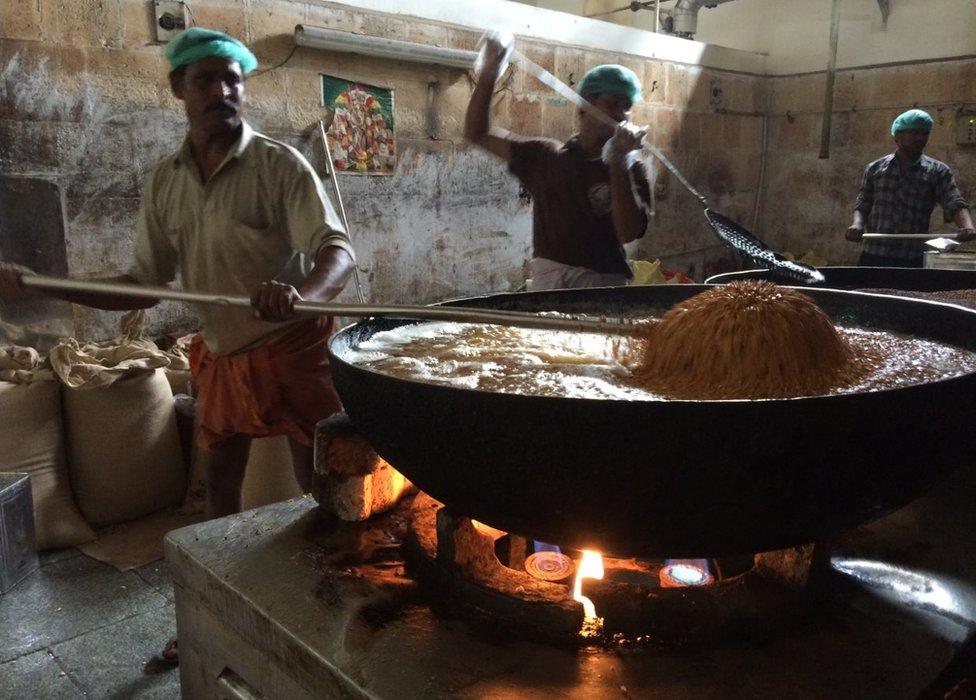Tasting India's coveted holy sweet
- Published

The holy sweet is a roughly fist-sized shape ball, made of chickpea flour, clarified butter, sugar, cashew nuts, raisins and cardamom
Getting your hands on a Tirupati laddoo is not easy.
To eat the famous holy sweet, given as an offering at one of India's holiest Hindu shrines, Tirumala Tirupati, you don't need to shell out a lot of money.
The temple in southern Andhra Pradesh state provides two laddoos at a subsidised cost of 10 rupees ($0.15; £0.11) each, and customers are allowed to buy another two at 25 rupees each.
But "allowed" is the key word here.
Actually getting your hands on the coveted sweet involves braving long queues, and procuring a high tech coupon complete with its own security code and biometric details like face recognition.
Inside one of India's biggest temple kitchens
Volunteers from various banks man counters where they check the validity of each ticket and money changes hands only after potential customers pass the facial recognition tests.
The laddoo itself is a roughly fist-sized ball, made of chickpea flour, clarified butter, sugar, cashew nuts, raisins and cardamom.
The recipe is a closely guarded 300-year-old secret, and only a few cooks are given the honour and responsibility of actually making it.
They do so in a secret temple kitchen called "potu", where they make around 300,000 laddoos every day.
These high security measures are in place to check bootlegging of the holy sweets.


This is the 14th article in a BBC series India on a plate, on the diversity and vibrancy of Indian food. Other stories in the series:
The dark history behind India and the UK's favourite drink
The Indian state that is obsessed with beef fry
Why this Indian state screams for ice cream
The street food that silences even the most heated debate

Production is standardised.
Each of the laddoos looks the same and even the weight of each sweet is precise - the small laddoo, as soon as it is taken out of the vats and shaped into a ball, should weigh precisely 178 grams (6.2 ounces). As it cools down, this weight will reduce to 174 grams.
'Largest kitchen'
In 2009, the Tirupati laddoo got its own Geographical Indicator (GI) tag.
Like other GI items Champagne and Darjeeling Tea, having the tag helps in preventing others from copying the sweet or exploiting the name.
But the laddoo is not the only thing you get to eat in Tirumala. The temple also has one of the world's largest kitchens that feeds nearly 120,000 pilgrims every day.

The temple kitchen feeds nearly 120,000 pilgrims every day
All day, more than 1,100 staff work in the solar-powered kitchen to make piping hot breakfast, lunch and dinner.
Everything in the kitchen is massive - the pans alone are capable of frying hundreds of kilos of vegetables each. The huge steel containers fitted on trolleys can hold 1,000 litres of curry each.
With a donation corpus of over $100m, the temple kitchen trust has been running for over three decades.
The devotees who wait in endless queues for a glimpse of the god say eating here completes their pilgrimage.